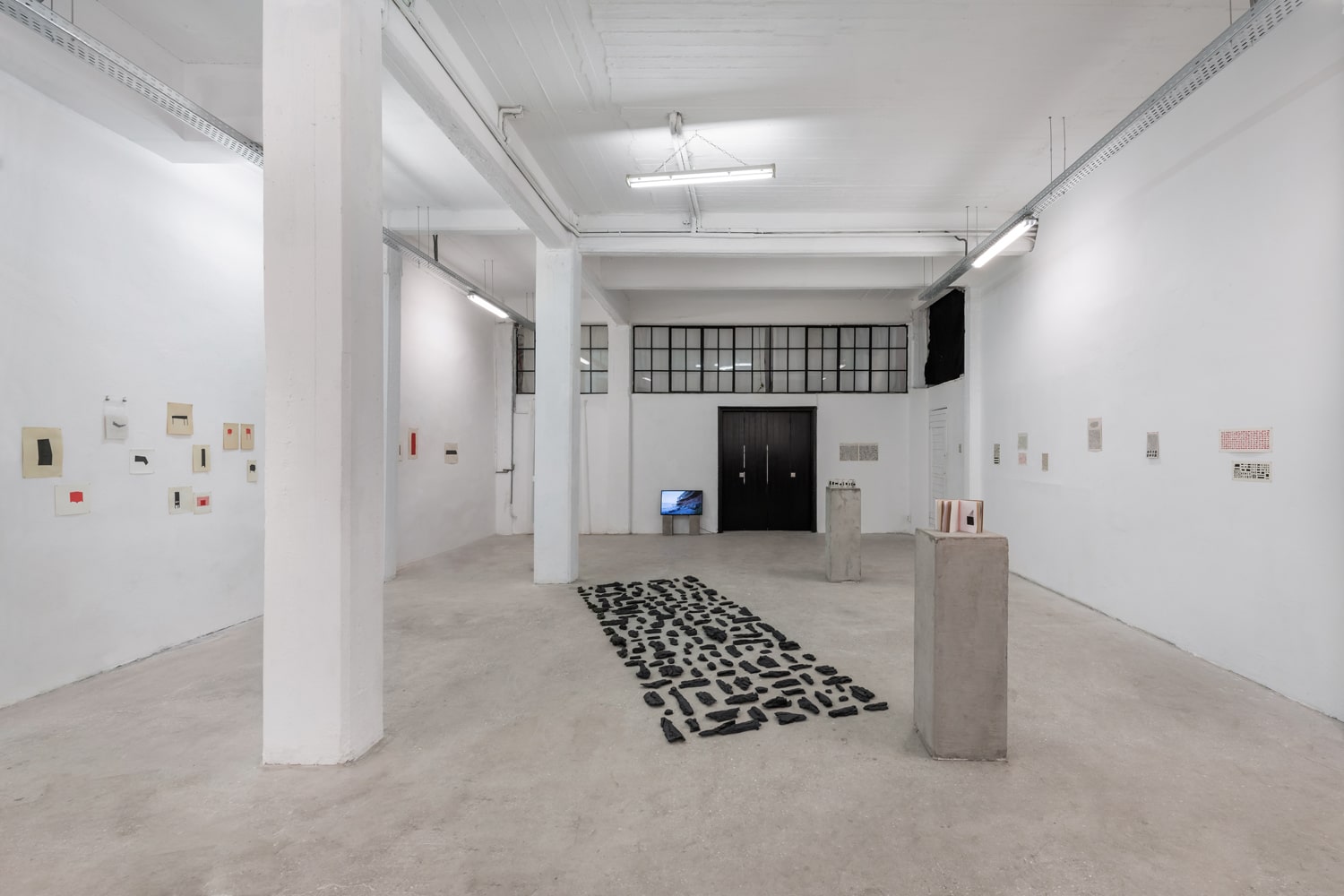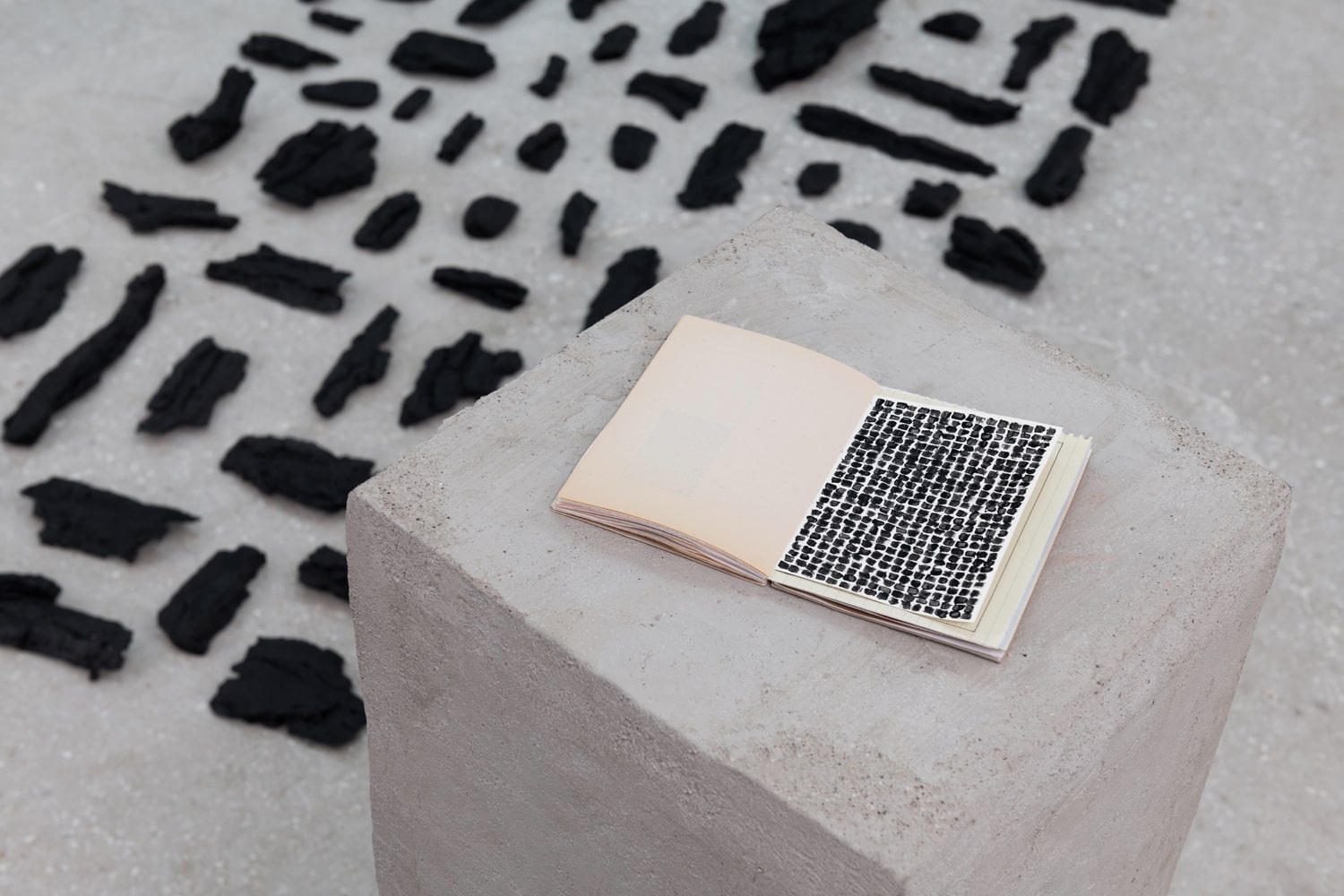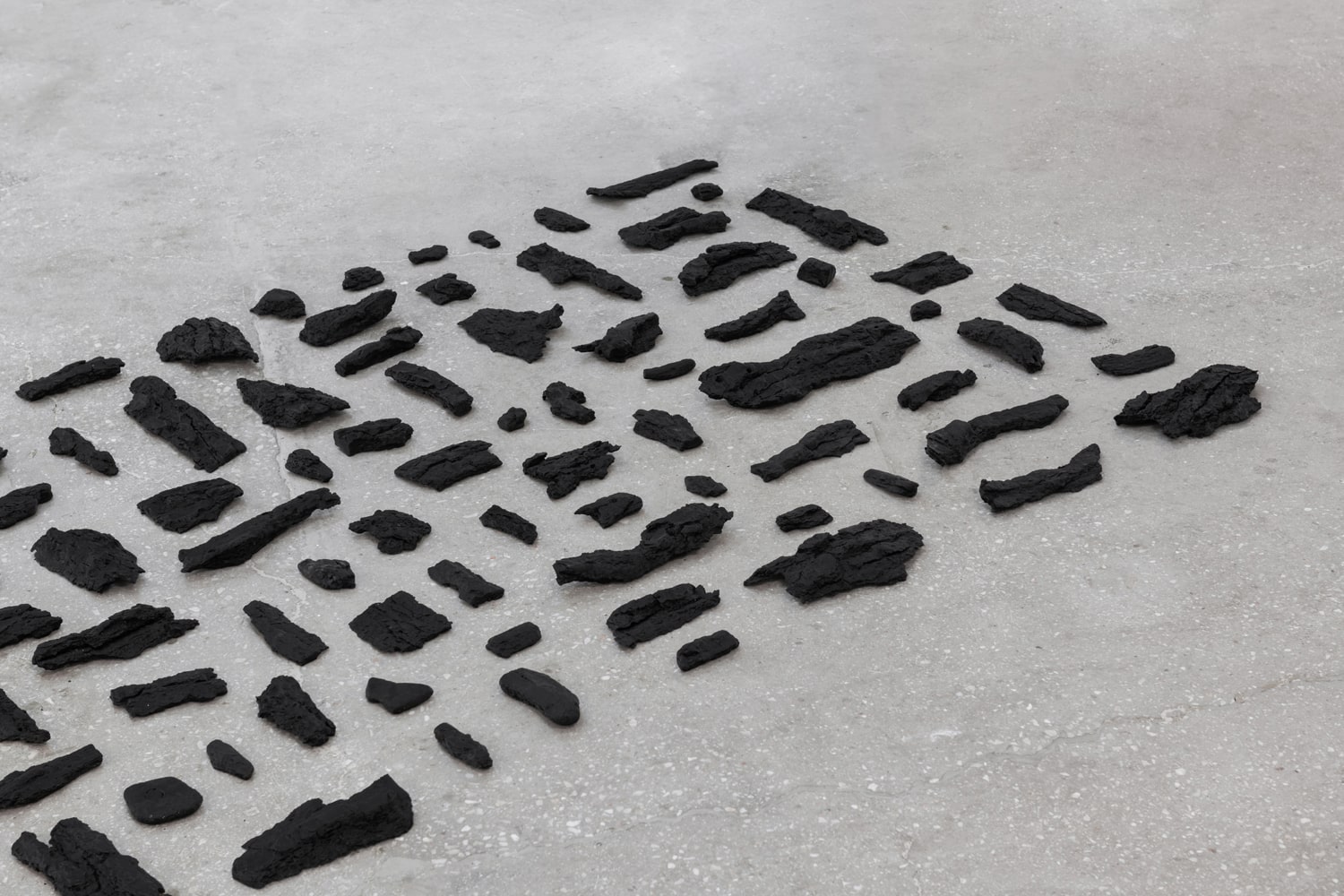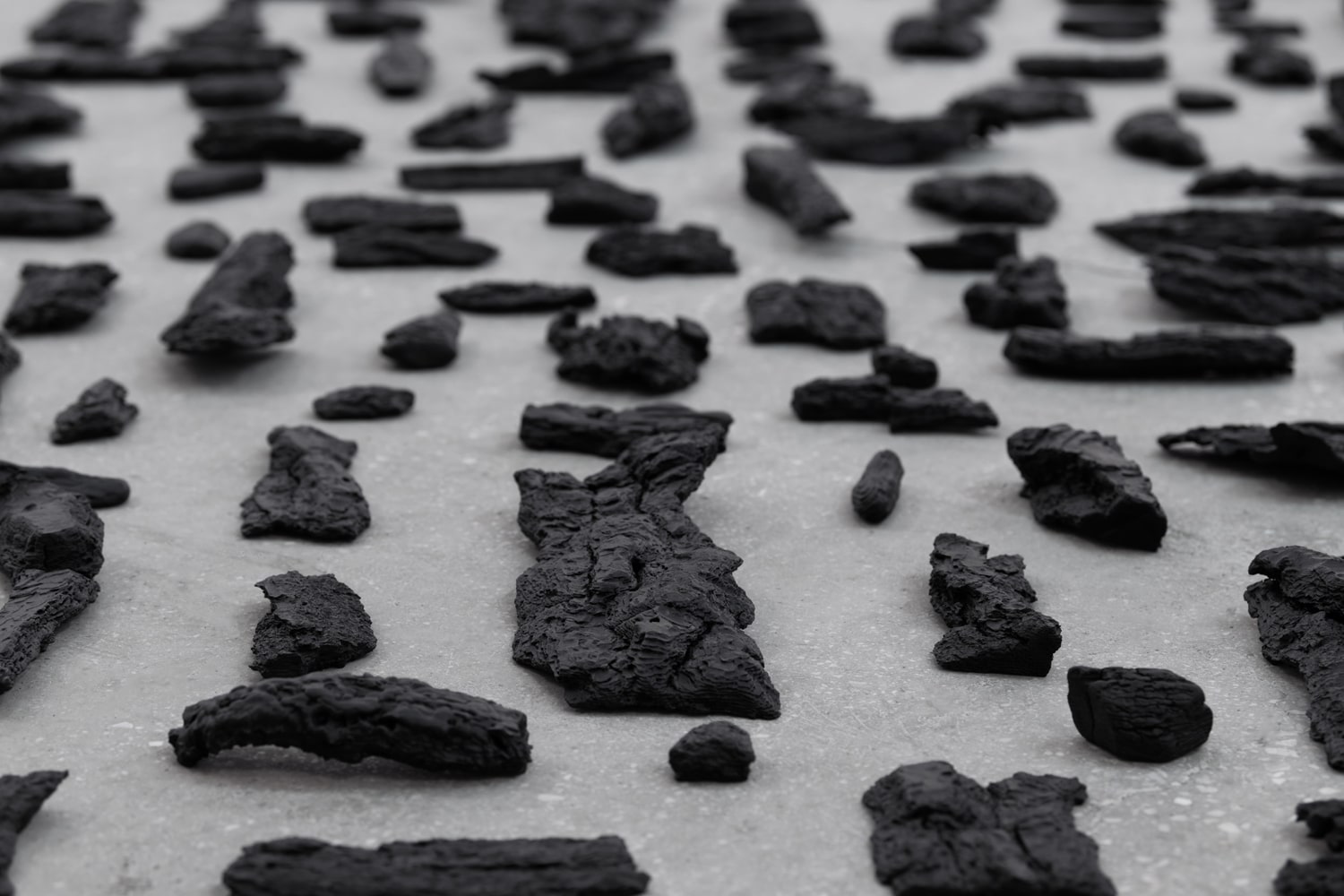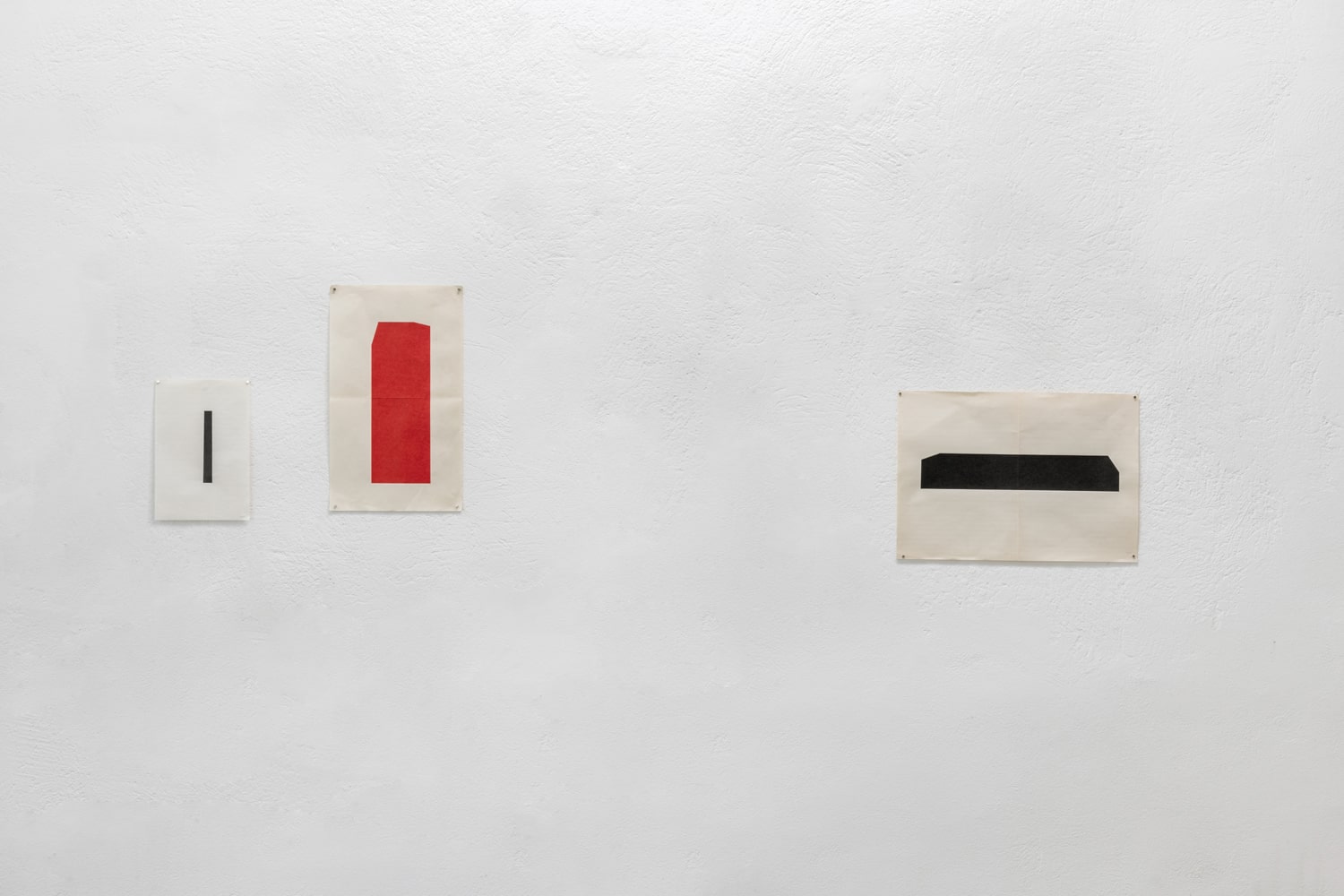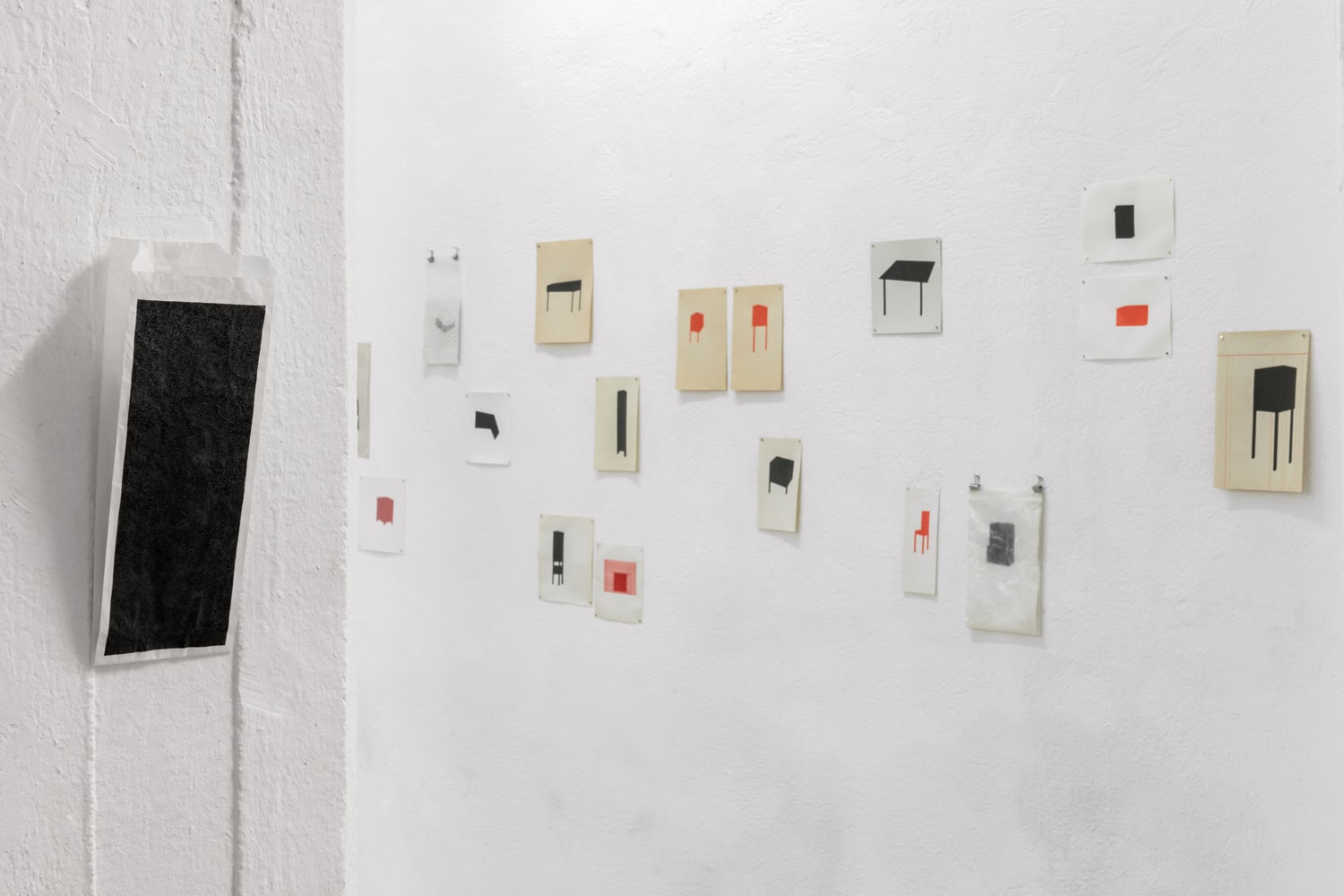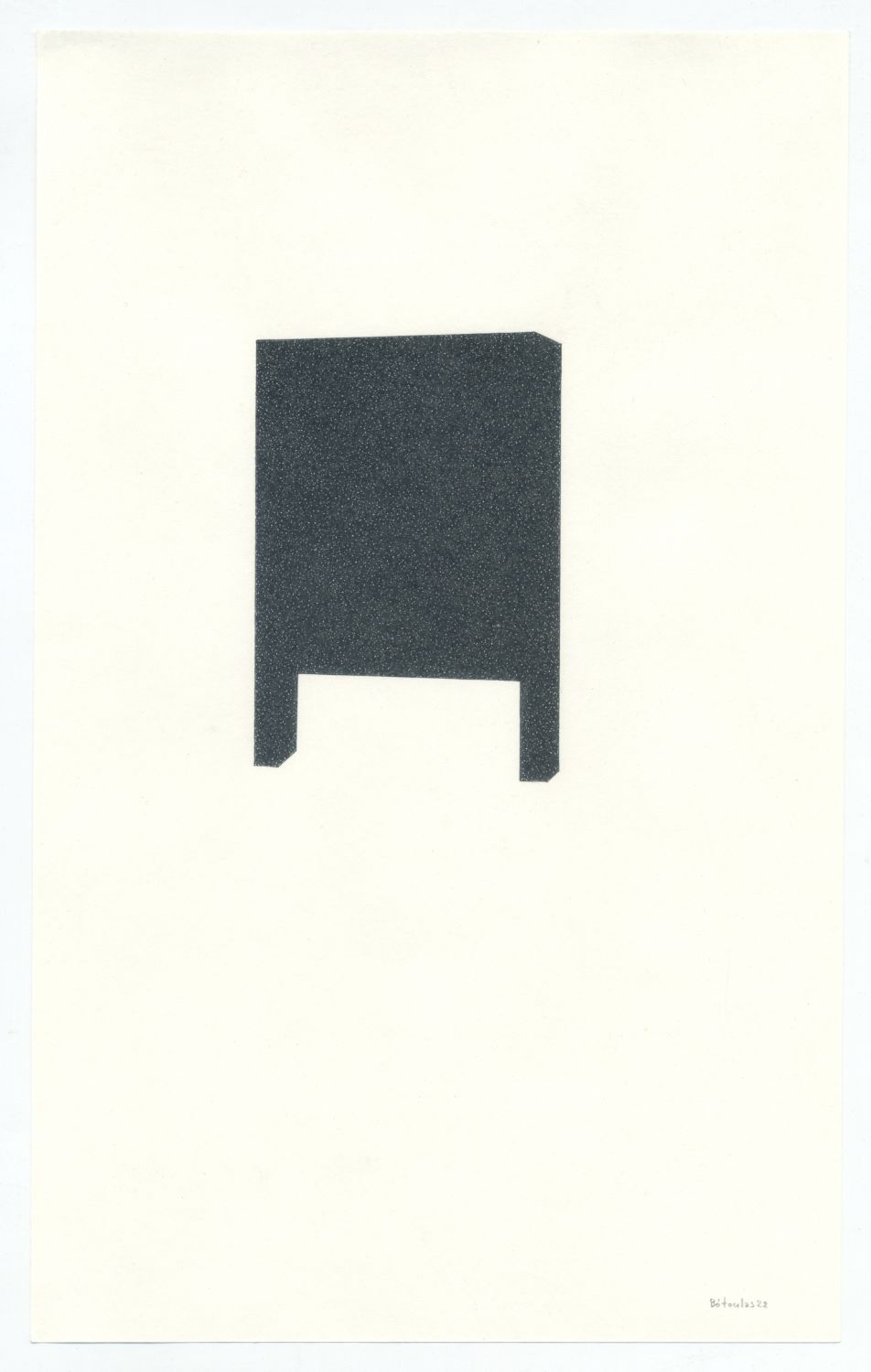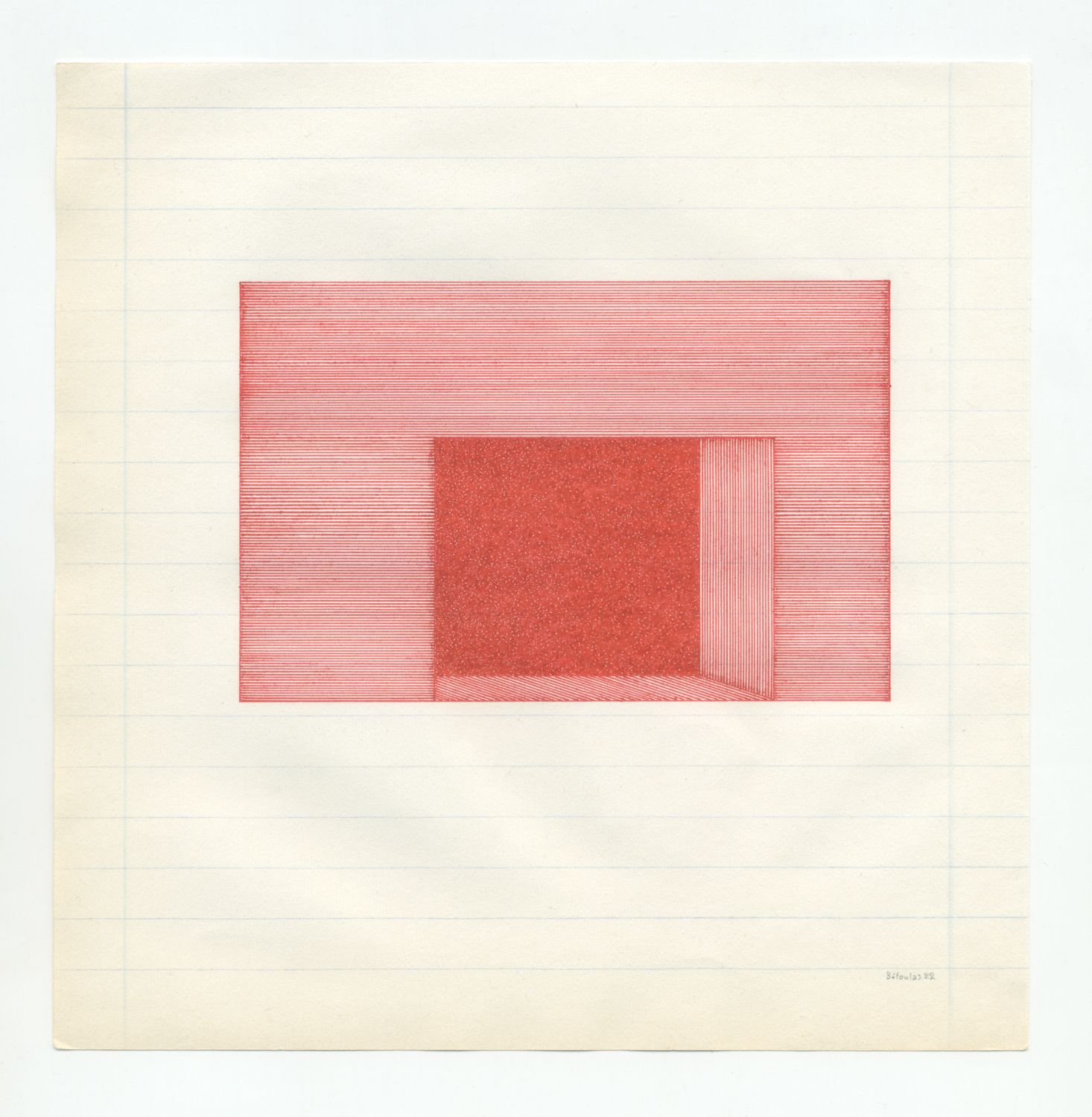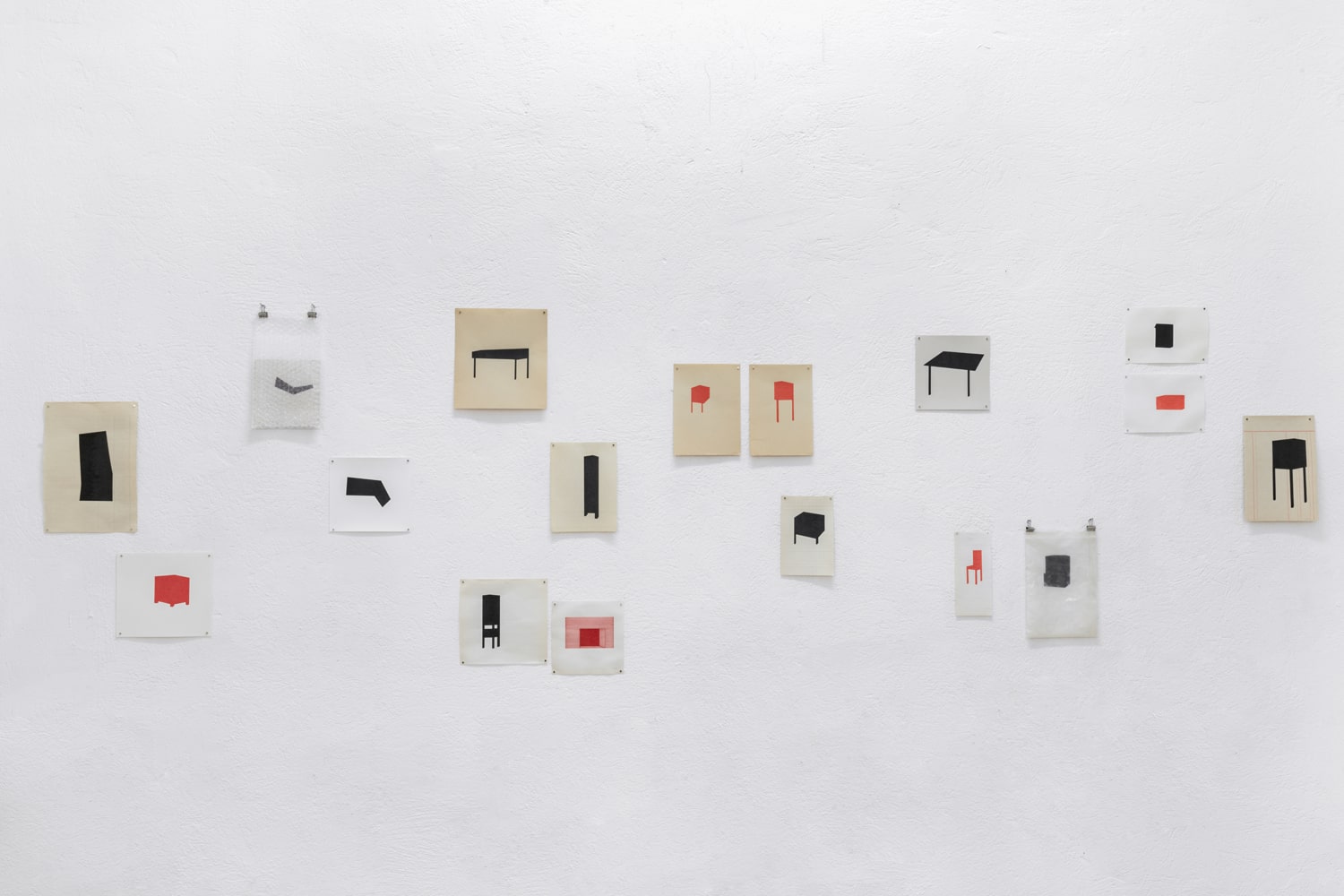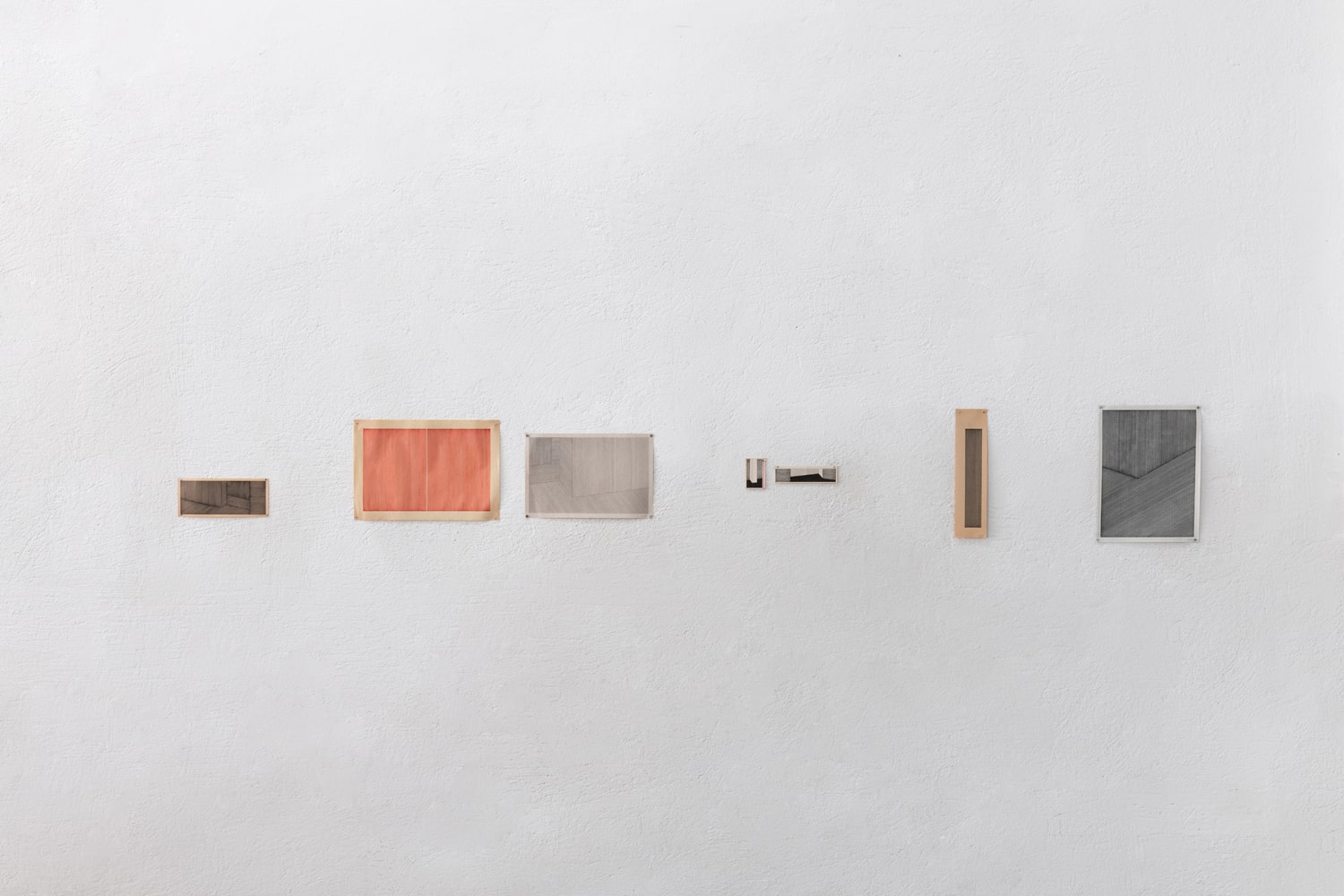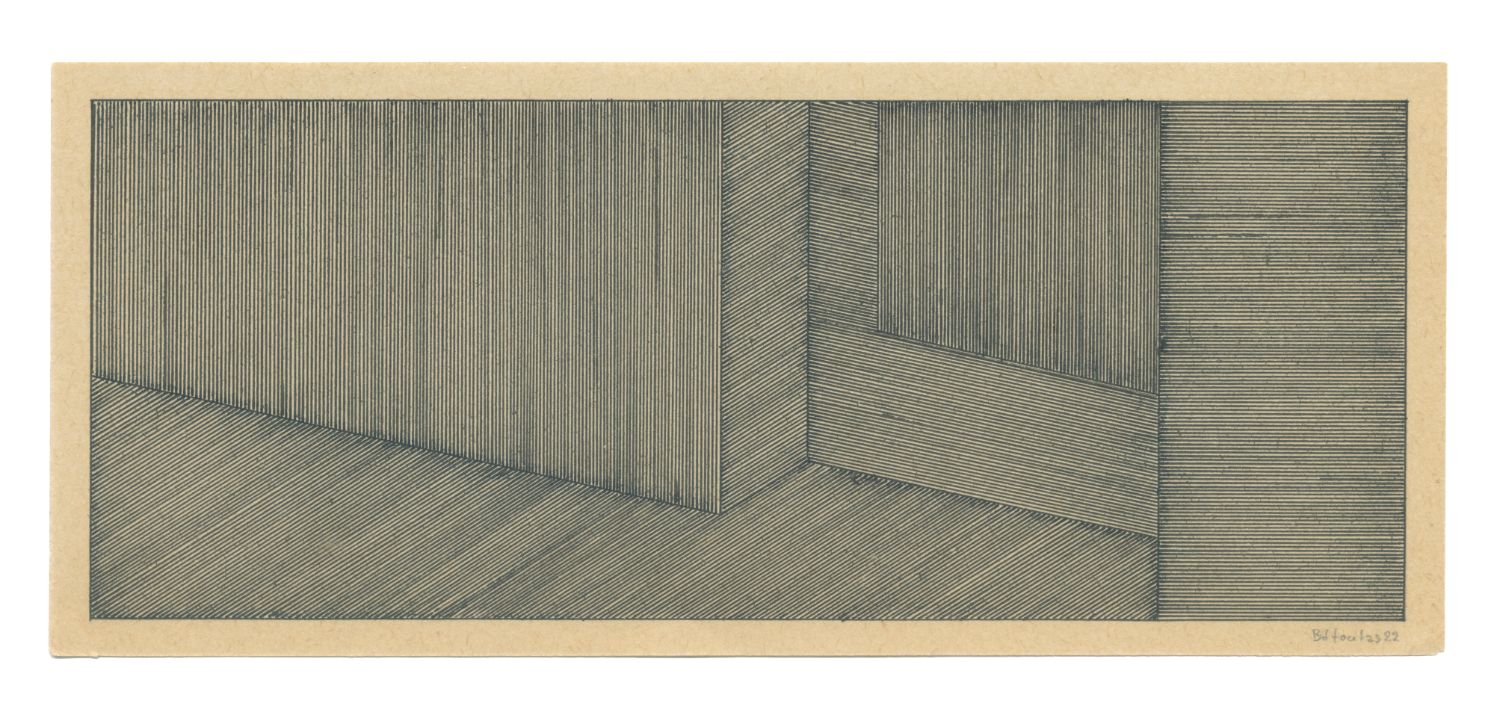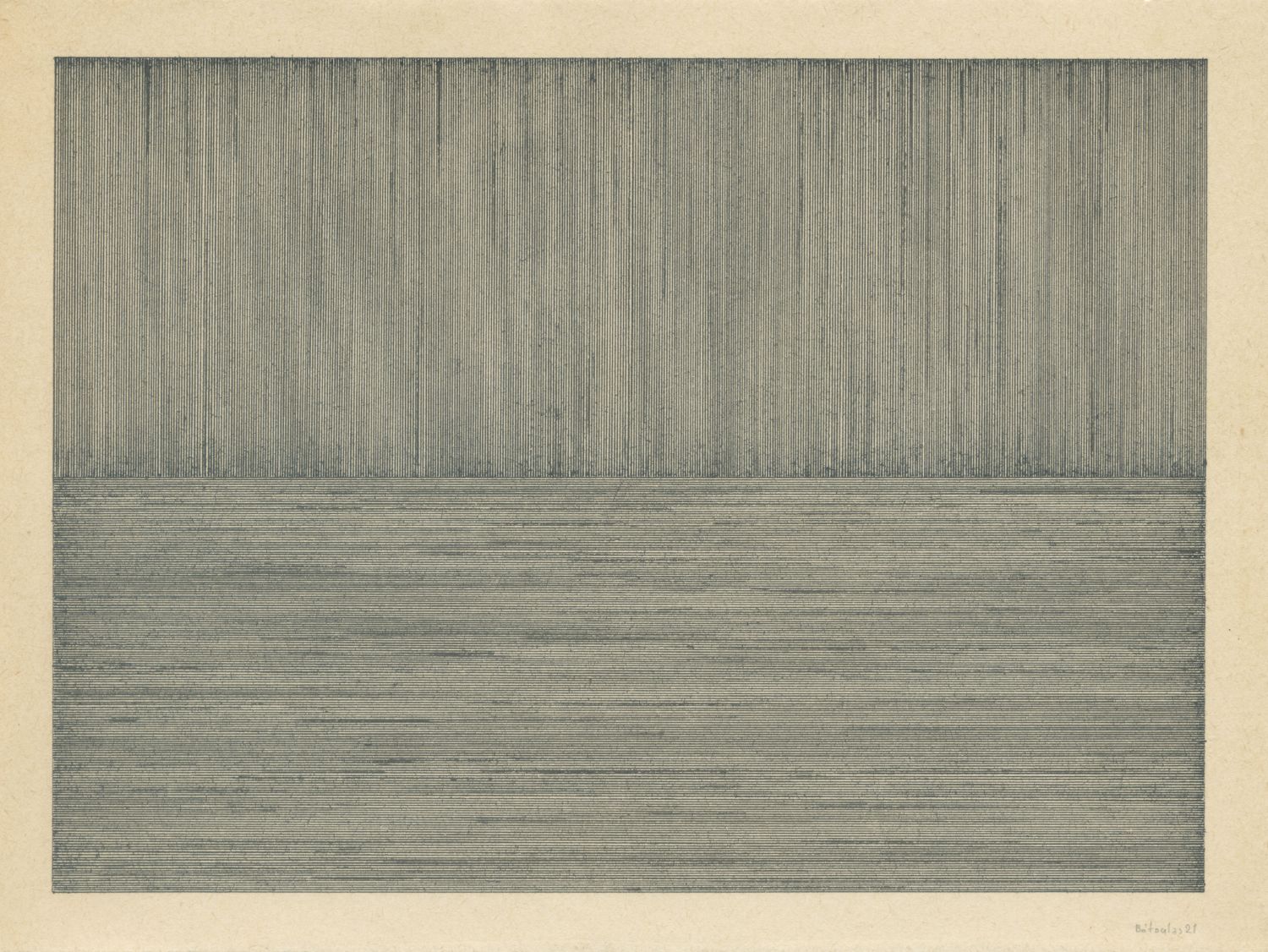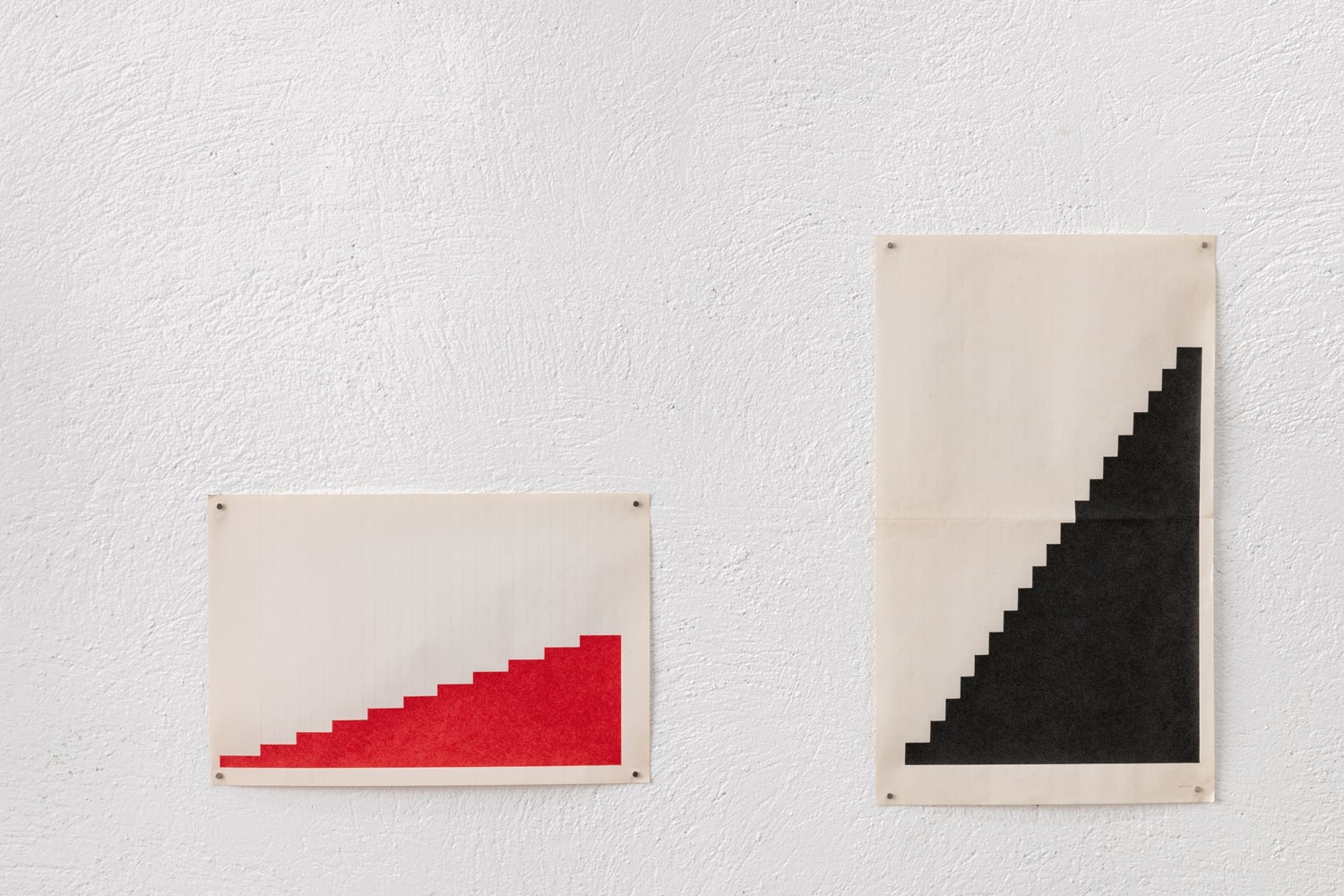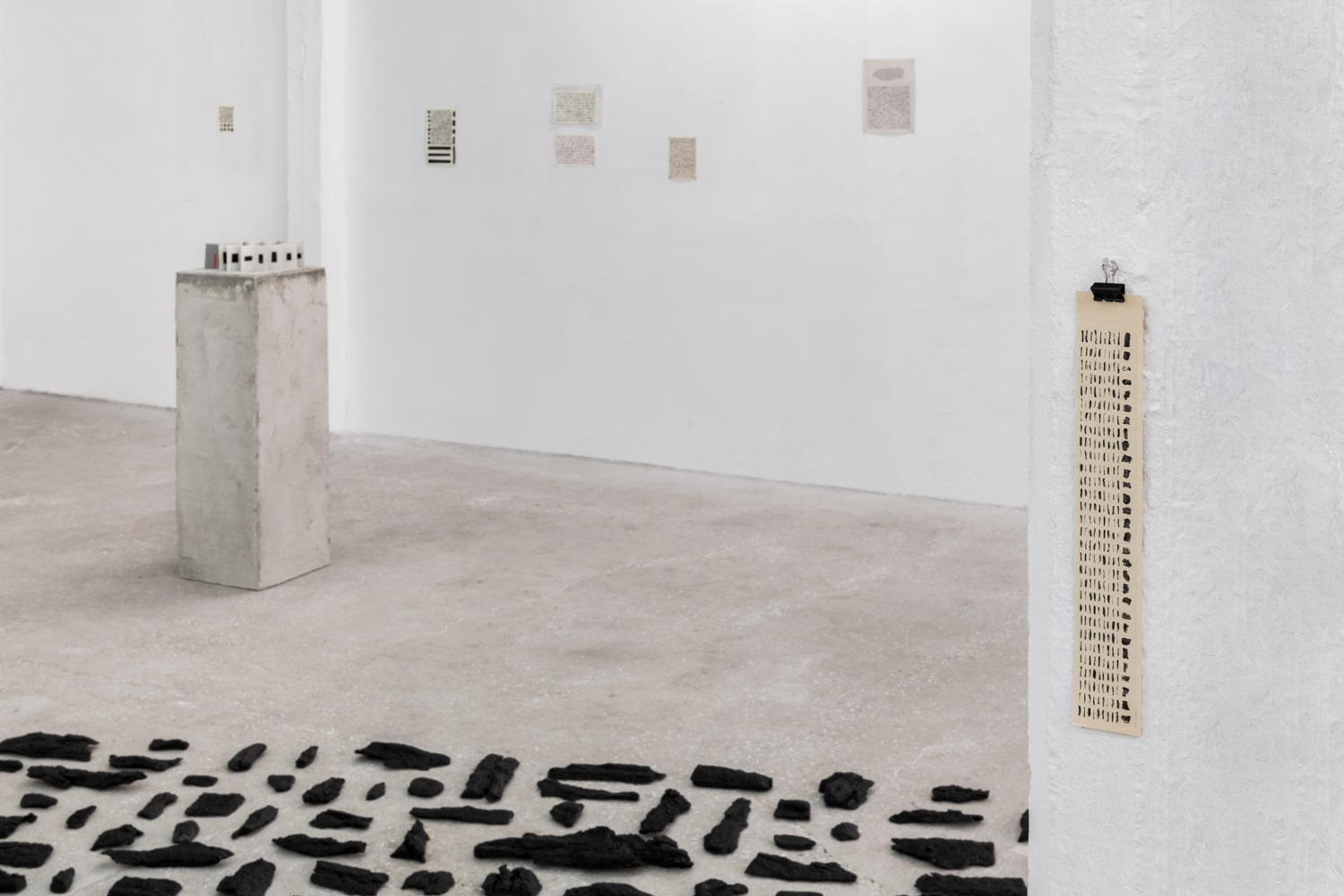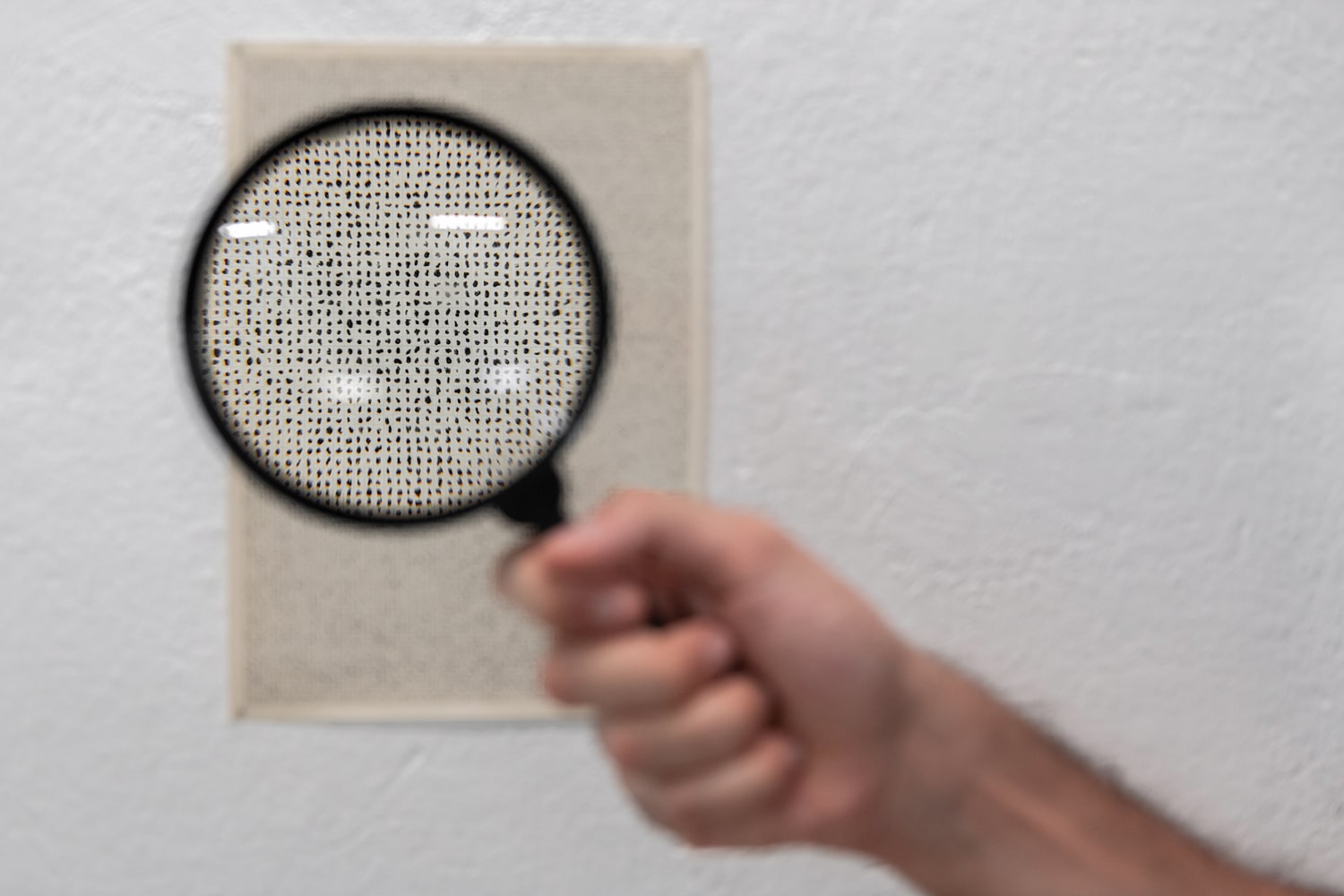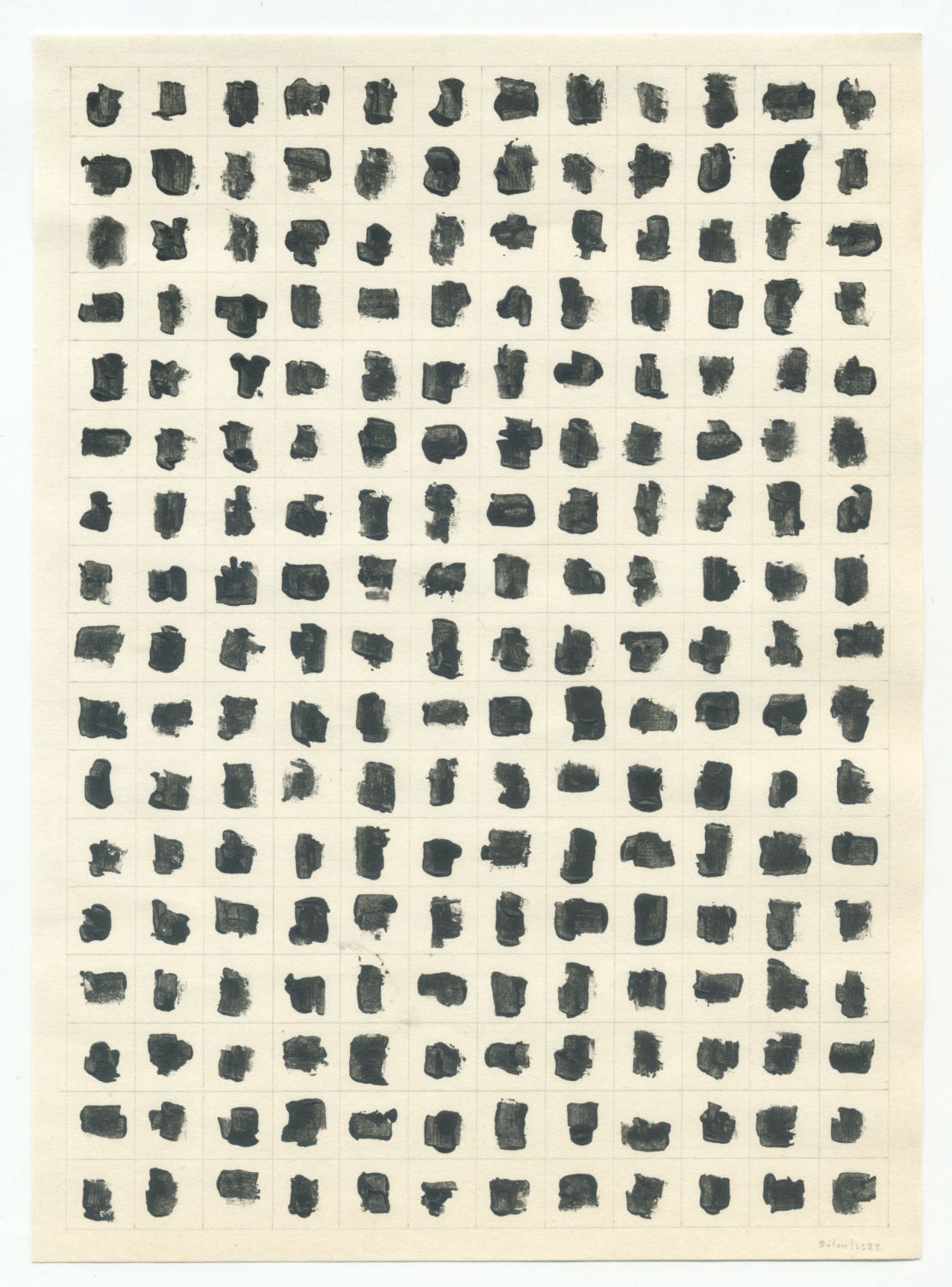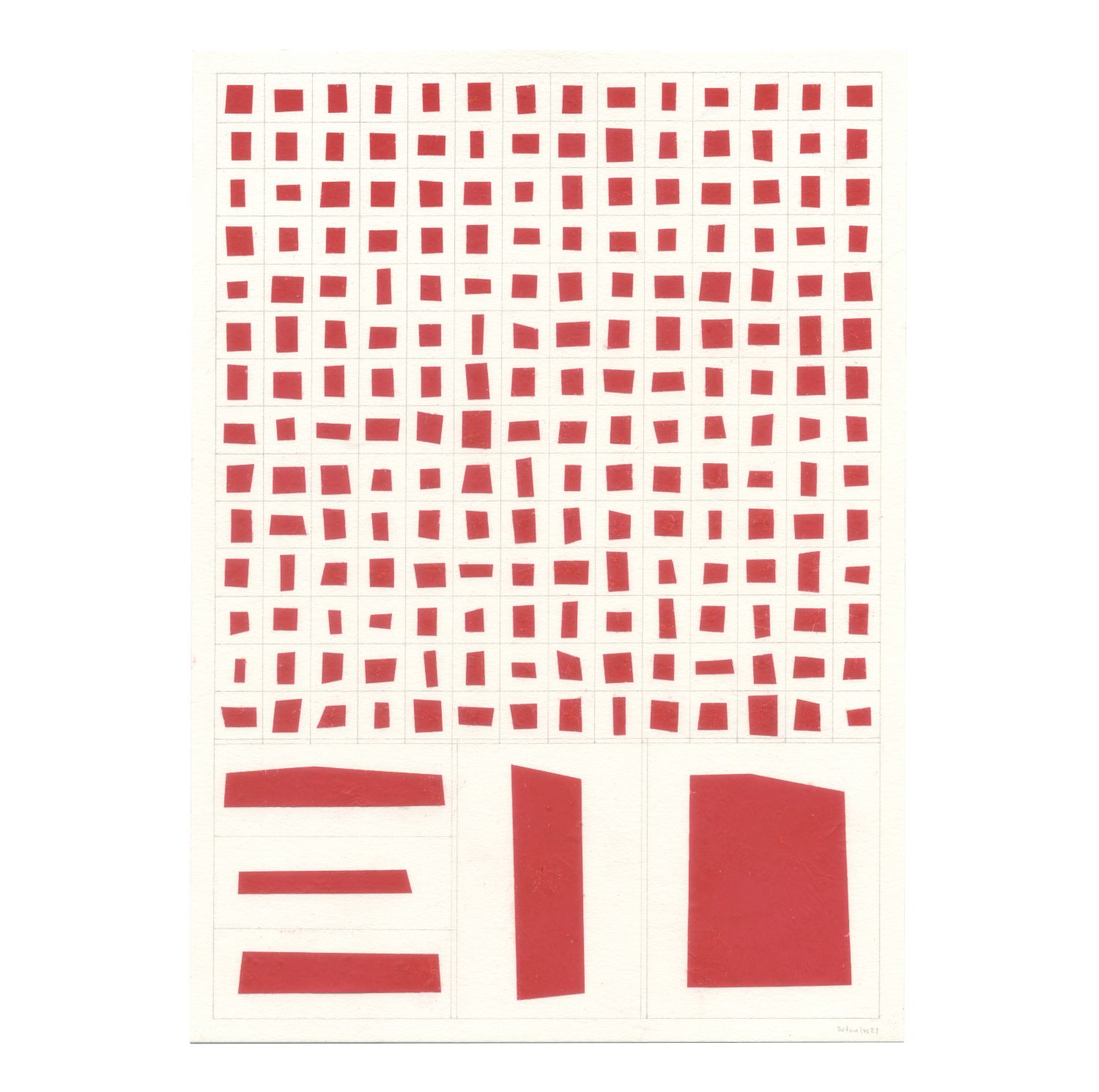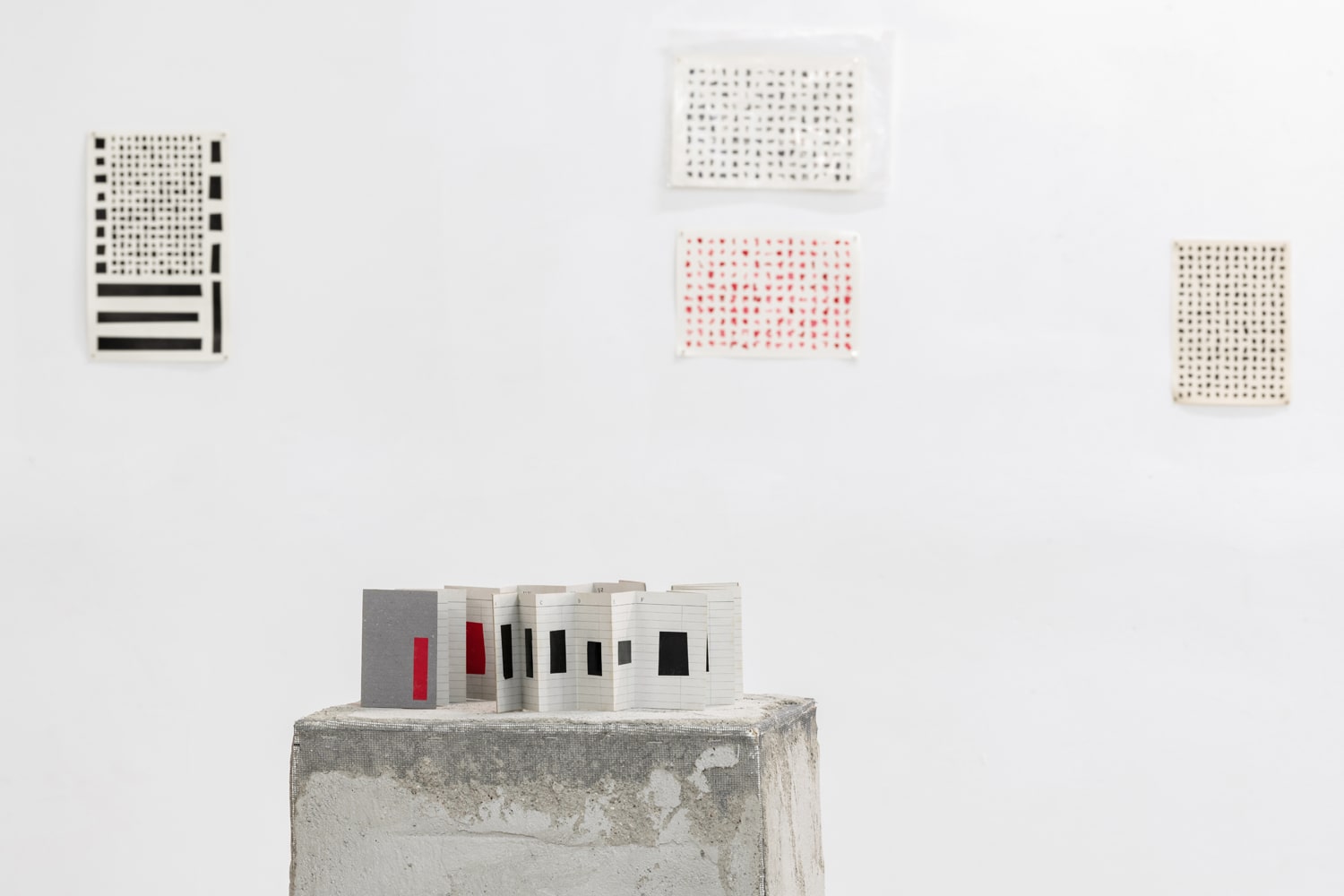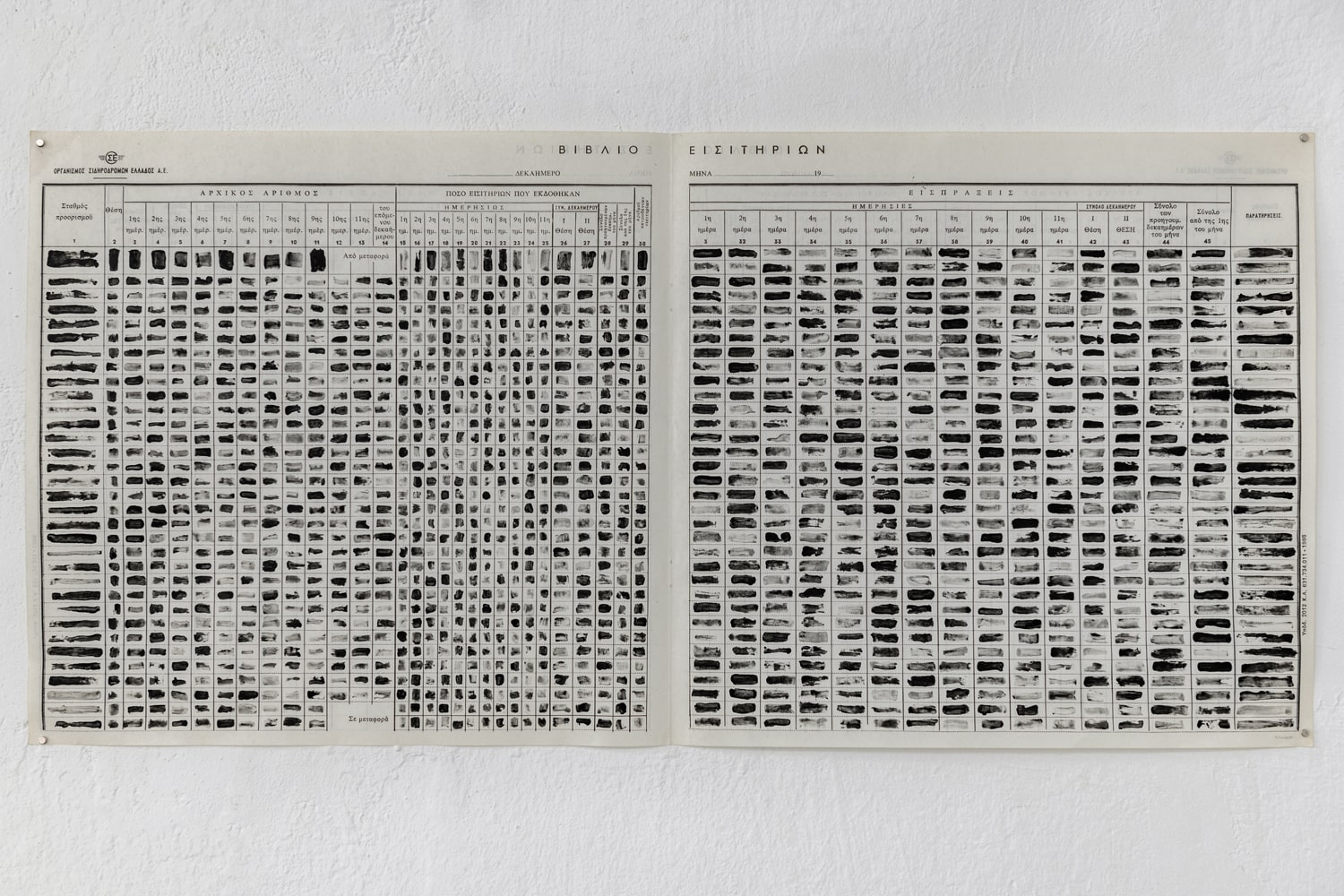Text by George Rallis
It allows for more to be me,
it cascades onto objects,
making them grab onto me,
making me fall to them.
The action that dictates my body,
controls its shape.
Producing a symbiosis
between the three.
Self, shadow, object.
Mass, center, perimeter,
into one.
Out Here in the Perimetre is Vasilis Botoulas’s third solo exhibition, in which the artist navigates his own body of work in conversation with the 2018 fire in East Attica; an event which not only glooms over the Greek cultural memory, but also informs the artist’s own discourse.
Vasilis’s studio is located at Neos Voutzas, an area which was directly affected by the disastrous fires. This locality in its own premise is a quasi-political suggestion in the Greek artistic discourse. How does the technification of cultural production and promotion come into play with alternative localities and art practices? In an artistic world, where technocratic mediums of expression are the omnipotent norm and capital centralization is the overarching consensus, how does removing yourself and placing that said self within the perimeter, potentially allow a reconfiguration and a reification of the way you create and deal with your own surroundings? The perimeter is a place that is isolated. It’s on the outside. However, it allows for a bigger, more holistic view of the mass of the body in question.
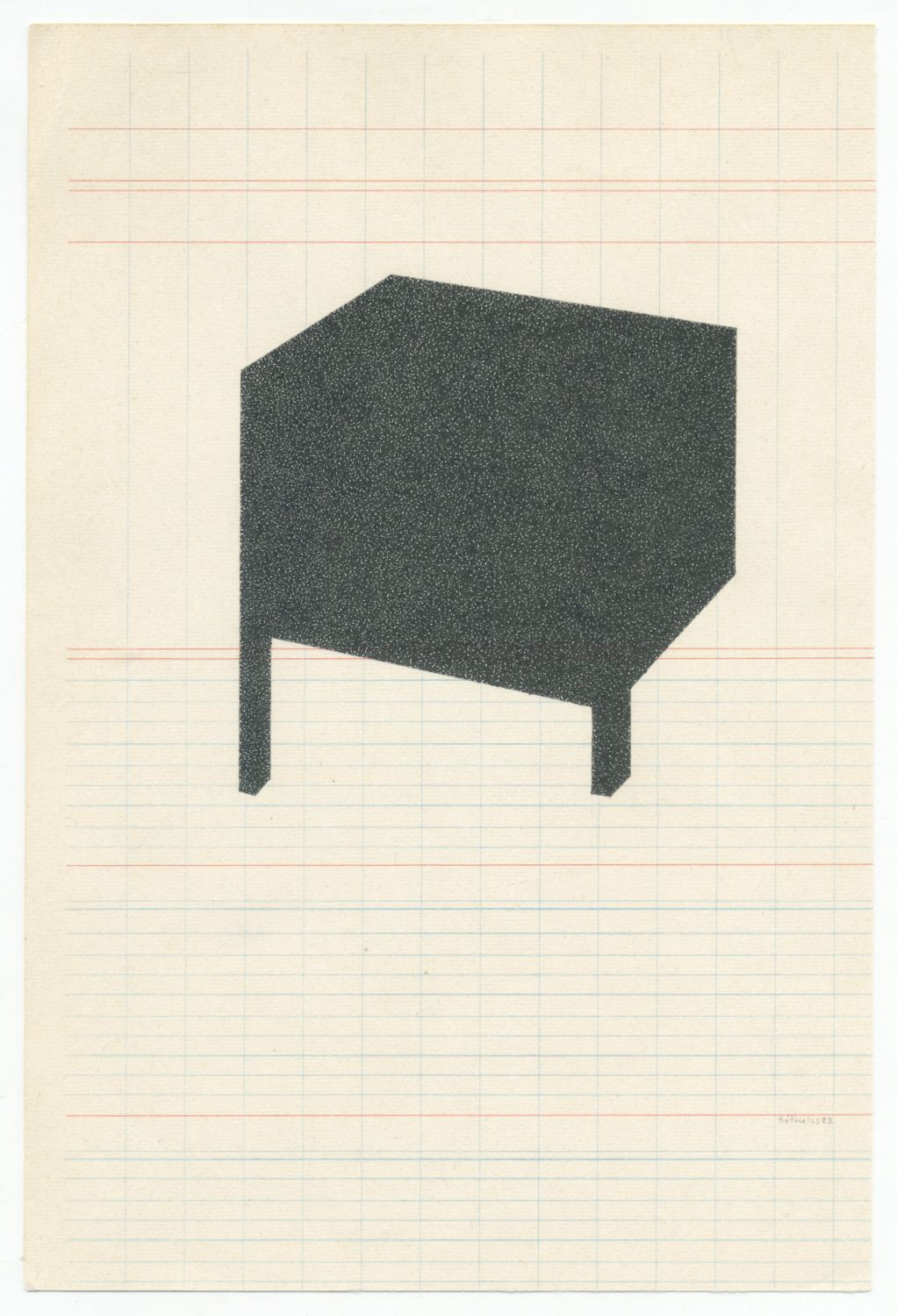
Vasilis claims himself as a linesmith, dotsmith, and repetitionist. In the same light as the meticulous crafting and use of words, Vasilis utilizes the core of his work to represent the essence of repetition through objectual interviews. How can a toothpick create patterns? How can paint react to a hairclip? The main principle of repetition is that each individual size and shape leads to a bigger whole through his craft’s movement and patience. The core has within it an obscure element of consistency which allows for easy navigation and a fluid expectation to the whole — yet when interrogated on a closer view, unveiling the meticulous and rhythmic spirit of his craft. The in-motion and effervescent motives of his painterly rhythm allow for an adaptive view to be adopted, shifting from shape to expectation and from assumption to imagination. As natural patterns, his technique hides within it a golden ratio. Like a snail’s shell, some patterns are unseen, unless viewed through the mathematical precision in which his artistic inspection manifests.
Out Here in the Perimetre is an amalgamation of stories, and of viewpoints representing the nature of Vasilis’s work. The duality between a bigger picture and its small-scale execution informs the duality of two stories throughout the work, coming together in the end, within the suggested discourse of the exhibition’s totality.
The first, Raindance for a Loamy Hillside, unveils a negotiation of trauma caused by the unforeseen incident of 2018. In an oblique way, subtracting the clear shape of objects allows for a subtracting of their own pain, while they exist in urgency within the barren landscape. As a coping mechanism of visual re-interpretation, burnt objects, outlines of buildings, containers and architectural elements of the landscape are put into question to obscure the visual information we take for granted. If a perimeter contains all that is inside, how does the inside inform its own ability to contain — namely, to contain its own pain in a visual modern-ism? In a conjoined nuance with a shadow, the inside shapes a perimeter, forcing it to take its shape with its own accord in mind. It places it in a position where it has to be thoughtful and encompassing of its own content, its own subject matter.
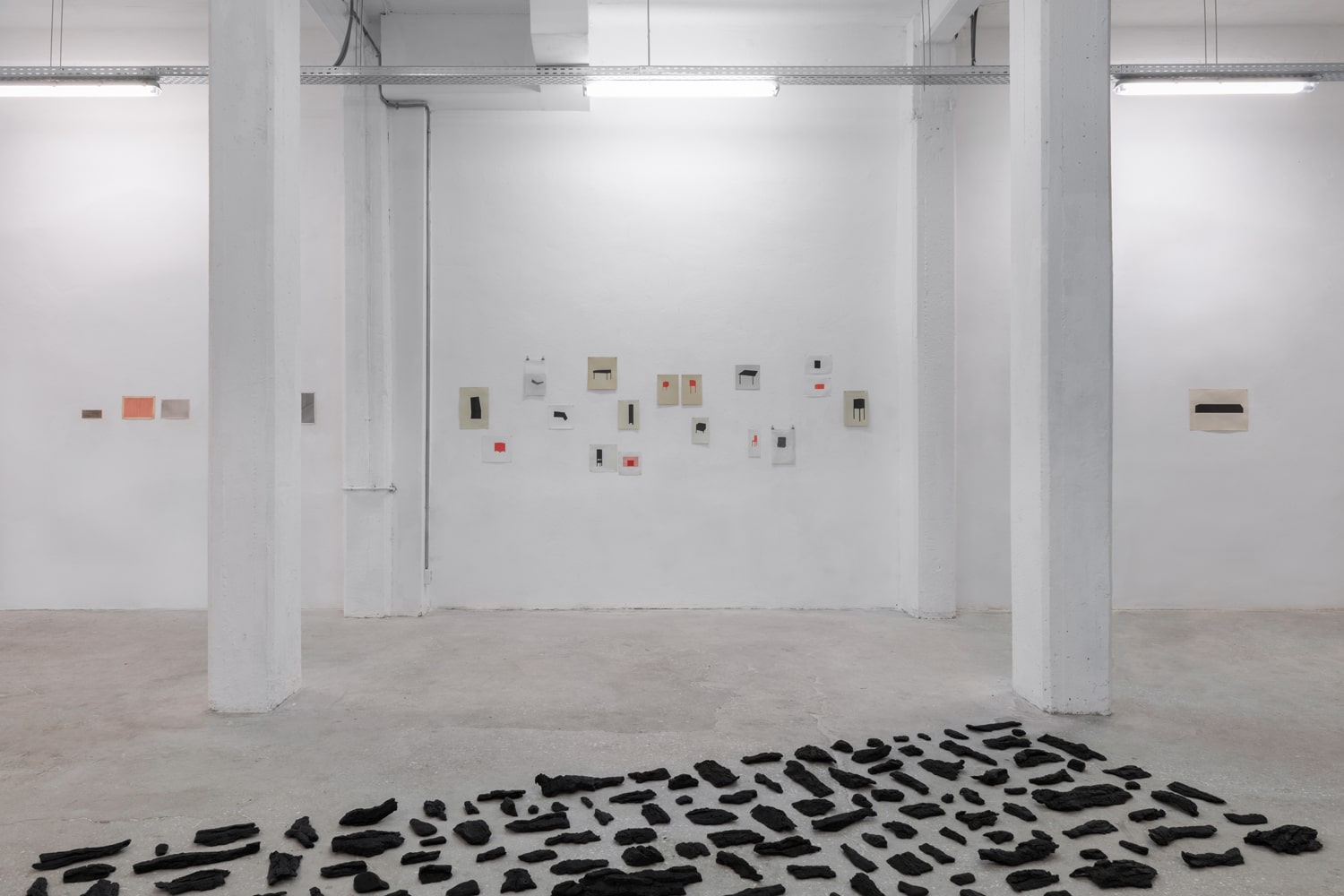
As a shadow falls onto things, saturating their shape with its subtraction, its dimensionality changes that of its chosen subject. In this way, the objectual analysis of a substance informs the exterior in a way that provides a new way of looking through artistic perception, but also cultural analysis. A way of looking which puts the complete social disavowal of responsibility at its core in a nuanced way that allows for meaning to be constructed by subtracting unintelligibility from a relationship which is usually un-interrogated. A relationship that functions as a love poem from a shadow to a shape and from an artist to a suggested healing practice from a trauma that is unequivocally overlooked. A visual relationship that functions as a suggested visual equation that shows the deadly way, with staircases being the only resolution given to people to exit a scenario of pyric hell. Vasilis, commenting through abstraction, allows for a subtle and soft critique of visual interpretations, but also of social responsibilities which are still left unaccounted for, in abundance. Through calmness and detachment, his visual exploration not only allows for a heavy-handed metaphor and symbolism between state and inhabitants to be interrogated, but also for a soft soliloquy between an artist and his craft.
On the second part, Atlas of Shadows, what Vasilis does is re-question the queries that have preceded. Through the element of repetition, he analyzes the way we view shadows and the impact they can have once conjoined with artistic practice and shape. The process of patience and of waiting allow for a sort of technique of observation to saturate the image with a volition that is left on the object’s own trajectory. If artistic practice is to be informed with alternative practices of creation, how can this conversation allow for a sort of object-oriented ontology, a new materialism to take shape? If artistic practice is to be analyzed as a grid, how is this grid changed with the artist’s interventions? How able is the use of other forms and shadows to organize chaos? As a pre-requisite, a sort of trans-mediality takes place where the medium takes on a transient character, to allow for change to happen, both of the work but also of spectatorship. As an anti-climactic, anti-heroic and anti-triumphant letting go of the devices of the medium itself, such a clear and conscious positioning opens up a newly informed argument concerning a craft and its boundaries.
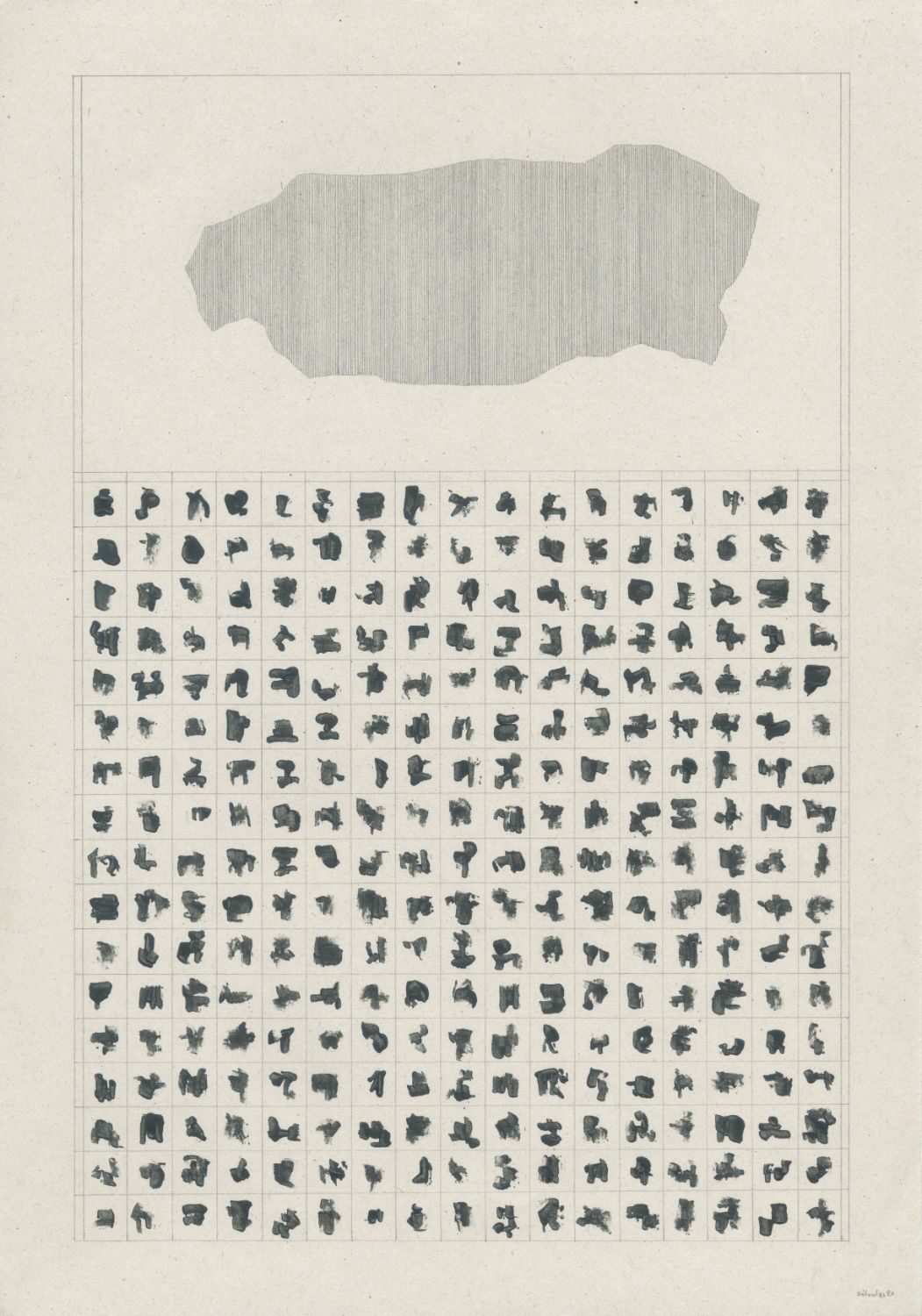
Overall, through a re-informed pointillism, a modernist linearity, Vasilis uses micro-appreciations, conscientious observations, diligent specificity and painstaking effort, to illuminate the stillness of Long Time. A sort of time that holds within its information an inclusion of a heavy center of gravity but also a soft collection of non-normative conversations regarding trauma, the ways we deal with it, and its application to collective memory.
One then breaks up, and allows for more.
In its stagnant movement, effort pushes through.
When the speed of kinesis,
allows for night to saturate our never-ending dialogues.
It is I, it is you, in a garden with no trees,
with flowers with no smell.
In nature’s patience to remove herself,
as an act of trust, as a leap of faith.
As shadows are falling and I’ve been here all day.
I guess now time, will have to carry on,
no words spoken, cause thought has stopped,
Somewhere out here in the perimeter.
